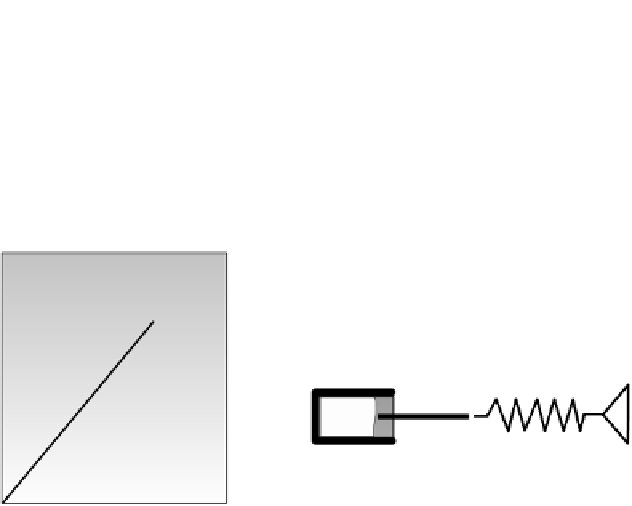Geoscience Reference
In-Depth Information
strain as in both elastic and viscous models (Fig. 3.100a).
Part of the strain will recover following an elastic behavior
but part will remain permanently deformed. Maxwell
solids behave elastically when the stresses are short lived,
like a ball of silicon putty that bounces elastically on the
floor when thrown with some force; but will accumulate
permanent deformations at a constant rate if the stress or
load (like the proper weight of the material) is applied for
a longer time. Visco-elastic models can be represented by
a spring attached longitudinally to a dashpot (Fig. 3.100b).
The spring will provide the recoverable strain whereas the
dashpot will supply the nonrecoverable strain when a
pulling force is applied parallel to the system.
Visco-plastic materials (called
Bingham plastics
) only
behave like viscous fluids after reaching a yield stress, the
strain rate subsequently being proportional to the stress;
initially the material does not respond to the applied stress
as for plastic solids (Fig. 3.100c). The analogy will be in
this case a dashpot attached in parallel to a load sliding on
a surface with an initial resistance to movement; once the
load is in motion it behaves in viscous fashion.
3.15.6
Ductile and brittle deformation
From the different rheological models discussed above it
can be concluded that there are several kinds of deforma-
tion. First, strain produced when loads are applied can be
reversible; this is characteristic of elastic behavior as in the
elastic curves or elastic-plastic materials (
a
, Fig. 3.99c)
when small stress increments are applied. Deformations can
also be nonreversible, which means that once the load is
released the rock will be deformed permanently.
Deformation is said to be
ductile
when rocks or other solids
are strained permanently without fracturing, which hap-
pens in plastic or elastic-plastic materials once the elastic
limit or yield strength (stress value which separates the elas-
tic and plastic fields) is reached (as
c
in Fig. 3.99c).
(a)
(b)
Maxwell material
F
Strain rate d
/d
t
(c)
(d)
Bingham material
F
s
y
Strain rate d
e
/d
t
Fig. 3.100
(a) Visco-elastic or Maxwell materials have a recoverable strain part belonging to the elastic component and a permanent strain
due to the viscous behavior like a spring attached to a dashpot (b); (c) visco-plastic or Bingham materials behave in a viscous way but after
reaching a critical stress value or yield stress (
y
) like a dashpot linked to a load moving on a rough surface (d).
























Search WWH ::

Custom Search